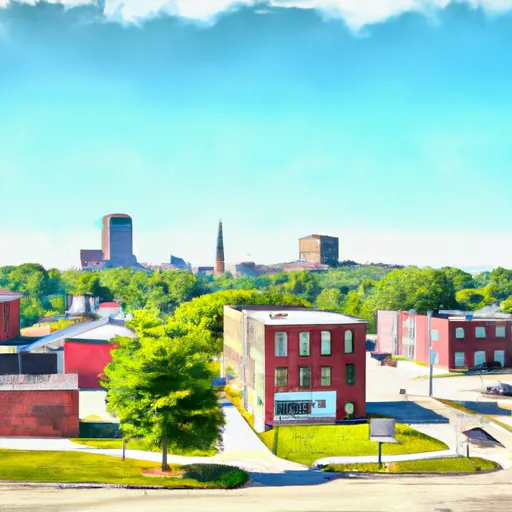-
 Snoflo Premium
Snoflo Premium
Get unlimited access to all our content
With no Ad interruptions! - Start Your Free Trial Login with existing account
Tekonsha
Eden Index
Climate
8.8
•
Recreation
4.3
•
Community
0.8
•
Safeguard
5.2/10

Located in Calhoun County, Tekonsha is a small village in the southern part of Michigan, United States. The climate in Tekonsha is characterized by cold winters and warm summers. Average temperatures range from lows of around 19°F (-7°C) in winter to highs of approximately 84°F (29°C) in summer. The area receives an average of 34 inches of rainfall annually.
Tekonsha lies within the St. Joseph River watershed, with the South Branch of the Kalamazoo River passing near the village. This hydrology contributes to the natural beauty of the region, providing opportunities for outdoor recreational activities. Fishing enthusiasts can enjoy casting their lines for various species, including bass, pike, and catfish.
For those seeking outdoor adventures, the nearby Fred Meijer Linear State Park offers a scenic trail for hiking, biking, and horseback riding. The park stretches for more than 30 miles, providing ample space for nature enthusiasts to explore. Additionally, the village's proximity to other natural areas, such as state parks and wildlife preserves, offers further opportunities for outdoor recreation. With its pleasant climate and picturesque surroundings, Tekonsha appeals to individuals looking to engage in nature-based activities.
What is the Eden Index?
The Snoflo Eden Index serves as a comprehensive rating system for regions, evaluating their desirability through a holistic assessment of climate health, outdoor recreation opportunities, and natural disaster risk, acknowledging the profound impact of these factors on livability and well-being.
Climate Health Indicator (CHI): 8.8
Tekonsha receives approximately
957mm of rain per year,
with humidity levels near 79%
and air temperatures averaging around
9°C.
Tekonsha has a plant hardyness factor of
5, meaning
plants and agriculture in this region thrive during a short period during spring and early summer. Most
plants will die off during the colder winter months.
By considering the ideal temperature range, reliable water supplies, clean air, and stable seasonal rain or snowpacks, the Climate Health Indicator (CHI) underscores the significance of a healthy climate as the foundation for quality living.
A healthy climate is paramount for ensuring a high quality of life and livability in a region, fostering both physical well-being and environmental harmony. This can be characterized by ideal temperatures, reliable access to water supplies, clean air, and consistent seasonal rain or snowpacks.
Weather Forecast
Streamflow Conditions
Southeastern Lake Michigan
Area Rivers
Southeastern Lake Michigan
Snowpack Depths
Southeastern Lake Michigan
Reservoir Storage Capacity
Southeastern Lake Michigan
Groundwater Levels
Recreational Opportunity Index (ROI): 4.3
The Recreational Opportunity Index (ROI) recognizes the value of outdoor recreational options, such as parks, hiking trails, camping sites, and fishing spots, while acknowledging that climate plays a pivotal role in ensuring the comfort and consistency of these experiences.
Access to outdoor recreational opportunities, encompassing activities such as parks, hiking, camping, and fishing, is crucial for overall well-being, and the climate plays a pivotal role in enabling and enhancing these experiences, ensuring that individuals can engage in nature-based activities comfortably and consistently.
Camping Areas
| Campground | Campsites | Reservations | Toilets | Showers | Elevation |
|---|---|---|---|---|---|
| Eaton County Fairgrounds | 340 | 880 ft | |||
| Ouabache State Park | 125 | 822 ft | |||
| Memorial Park Campground - Coldwater | None | 927 ft | |||
| Branch County Fairgrounds RV | None | 961 ft | |||
| Steuben County Park | None | 1,019 ft | |||
| Angel Cove | 110 | 932 ft | |||
| Potawatomi Rec Area | 123 | 949 ft | |||
| Marble Lake County Park | None | 995 ft | |||
| Pokagon State Park | 275 | 1,026 ft | |||
| Johnny Appleseed Park | 40 | 759 ft |
Nearby Ski Areas
Catastrophe Safeguard Index (CSI):
The Catastrophe Safeguard Index (CSI) recognizes that natural disaster risk, encompassing floods, fires, hurricanes, and tornadoes, can drastically affect safety and the overall appeal of an area.
The level of natural disaster risk in a region significantly affects safety and the overall livability, with climate change amplifying these risks by potentially increasing the frequency and intensity of events like floods, fires, hurricanes, and tornadoes, thereby posing substantial challenges to community resilience and well-being.
Community Resilience Indicator (CRI): 0.8
The Community Resilience Indicator (CRI) recognizes that education, healthcare, and socioeconomics are crucial to the well-being of a region. The CRI acknowledges the profound impact of these elements on residents' overall quality of life. By evaluating educational resources, healthcare accessibility, and economic inclusivity, the index captures the essential aspects that contribute to a thriving community, fostering resident satisfaction, equity, and social cohesion.

